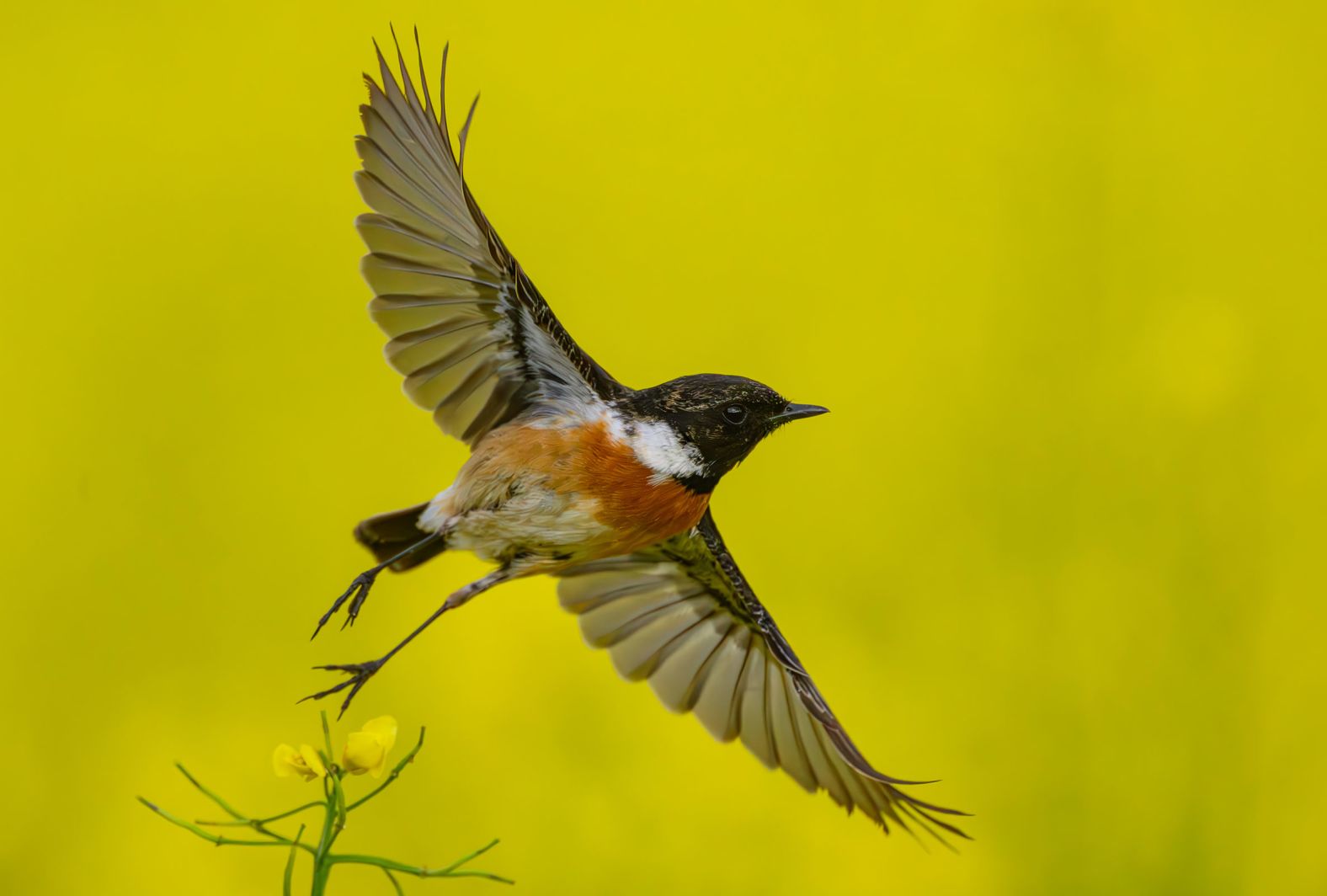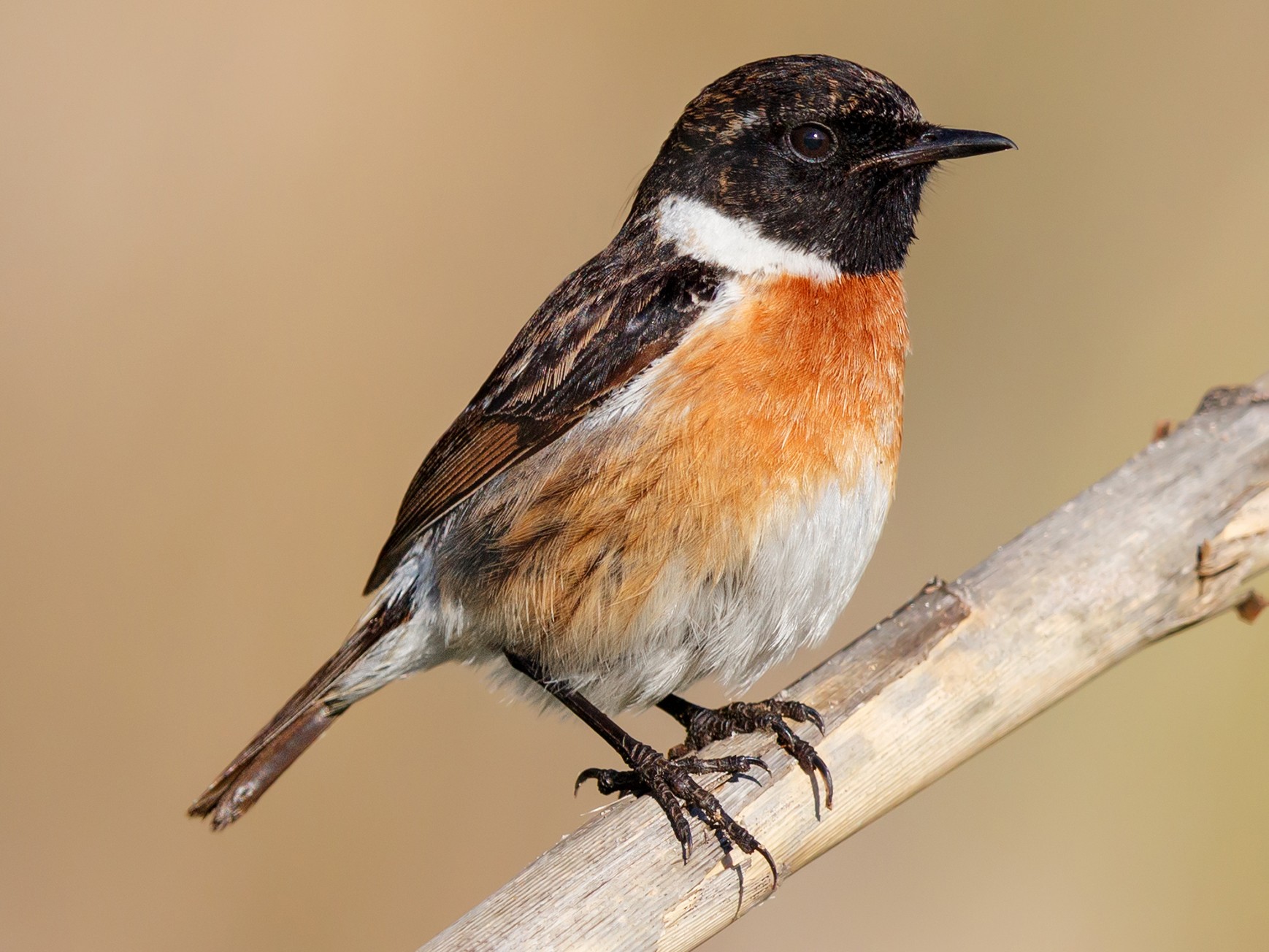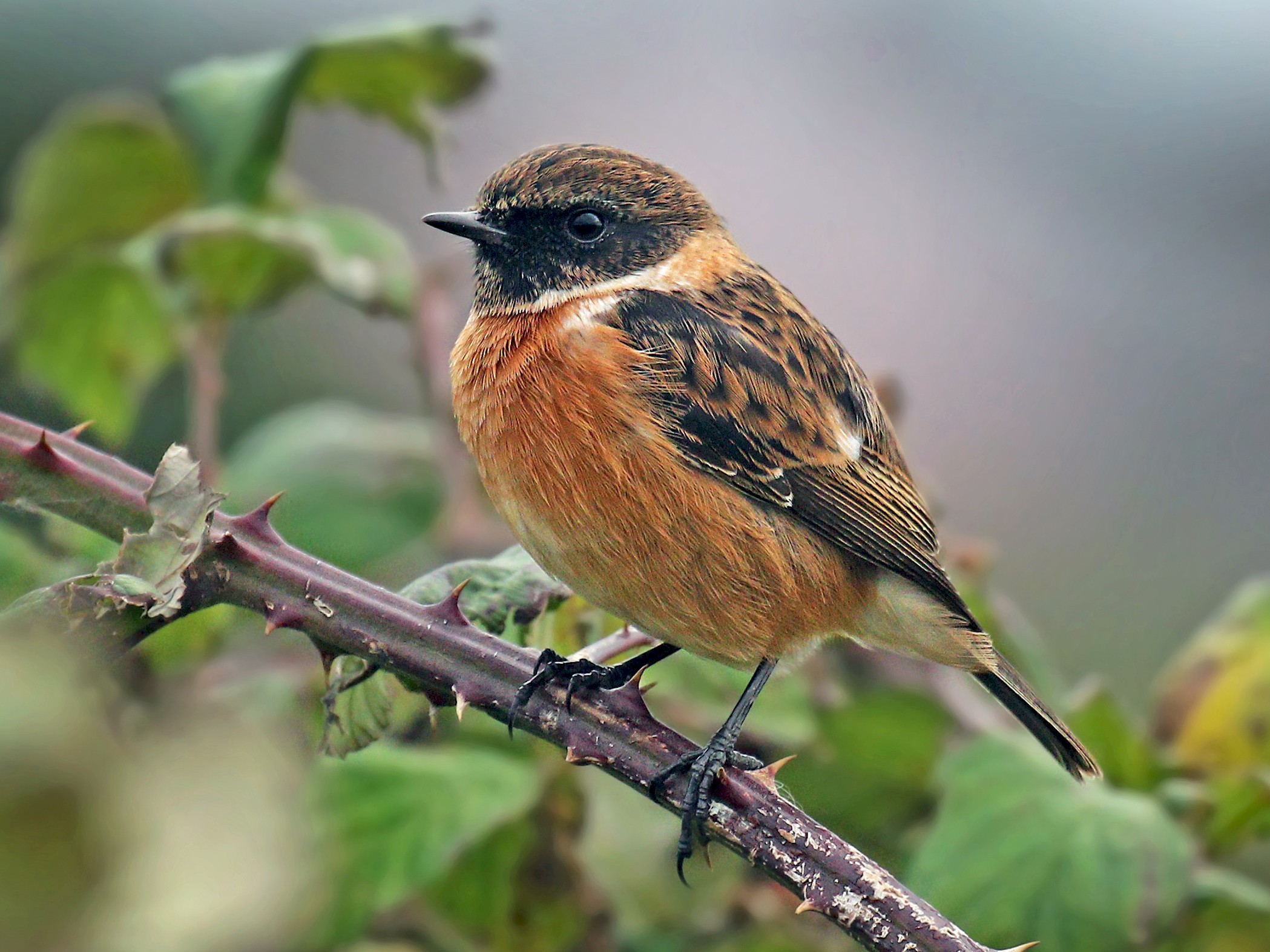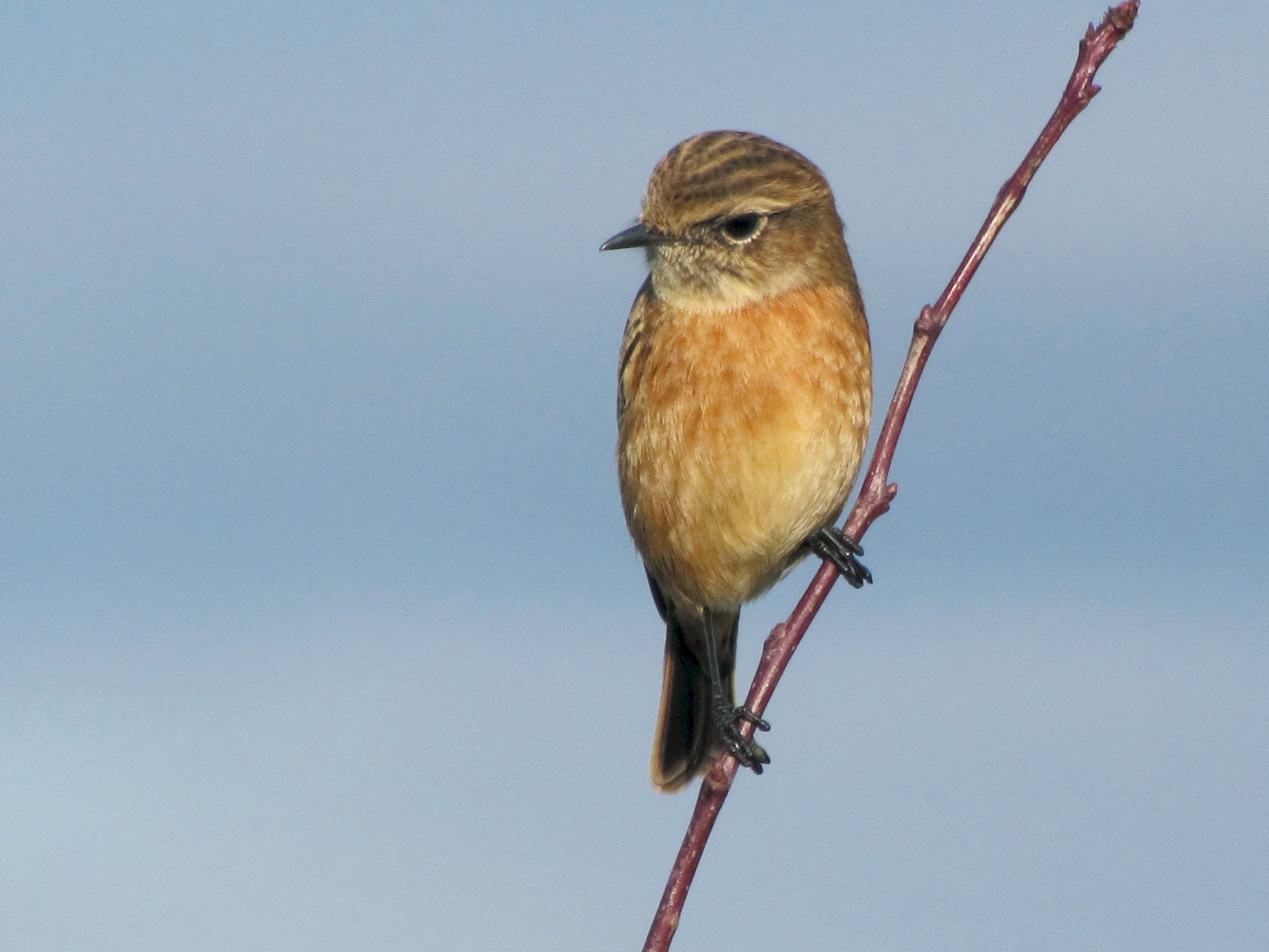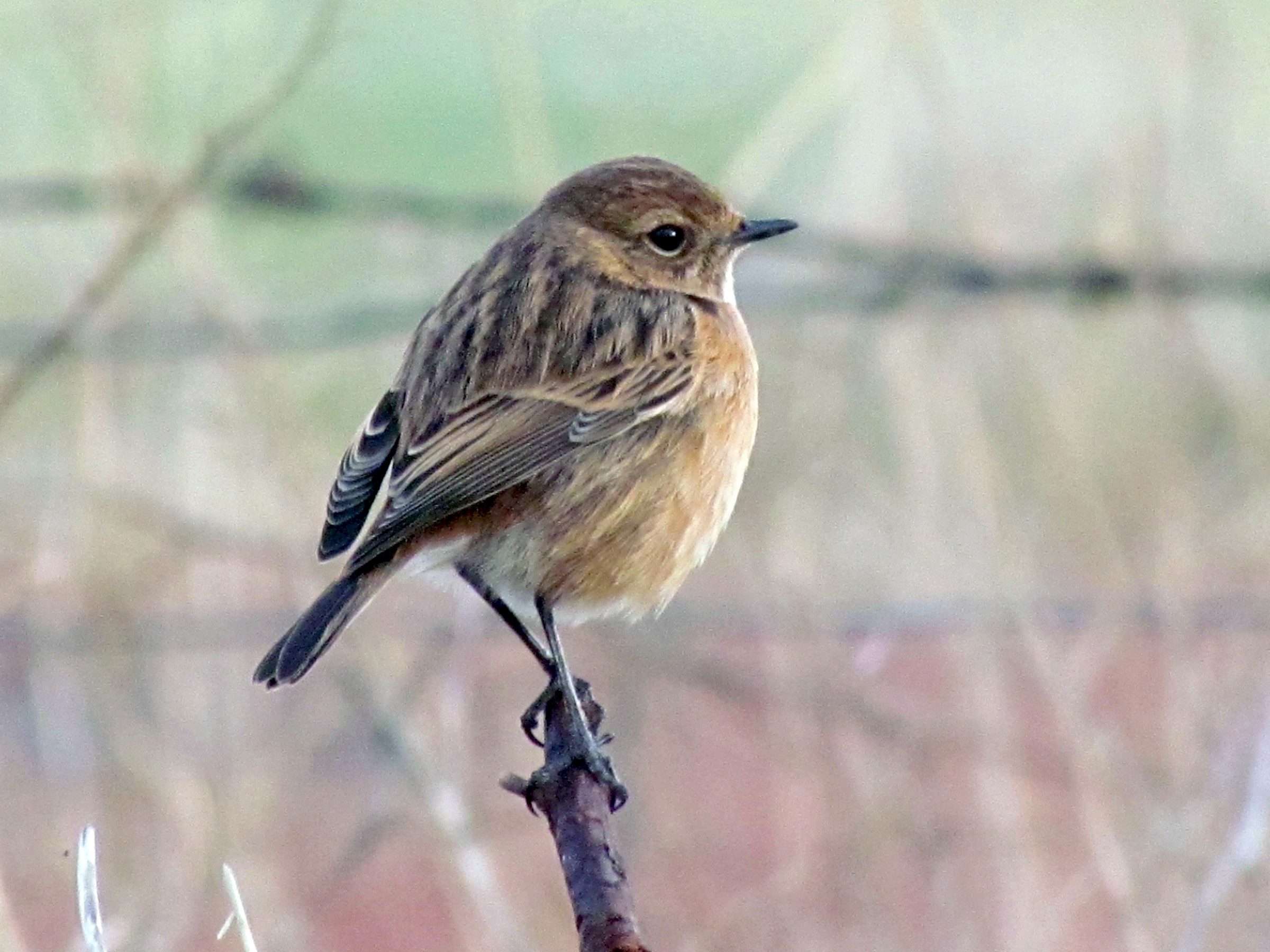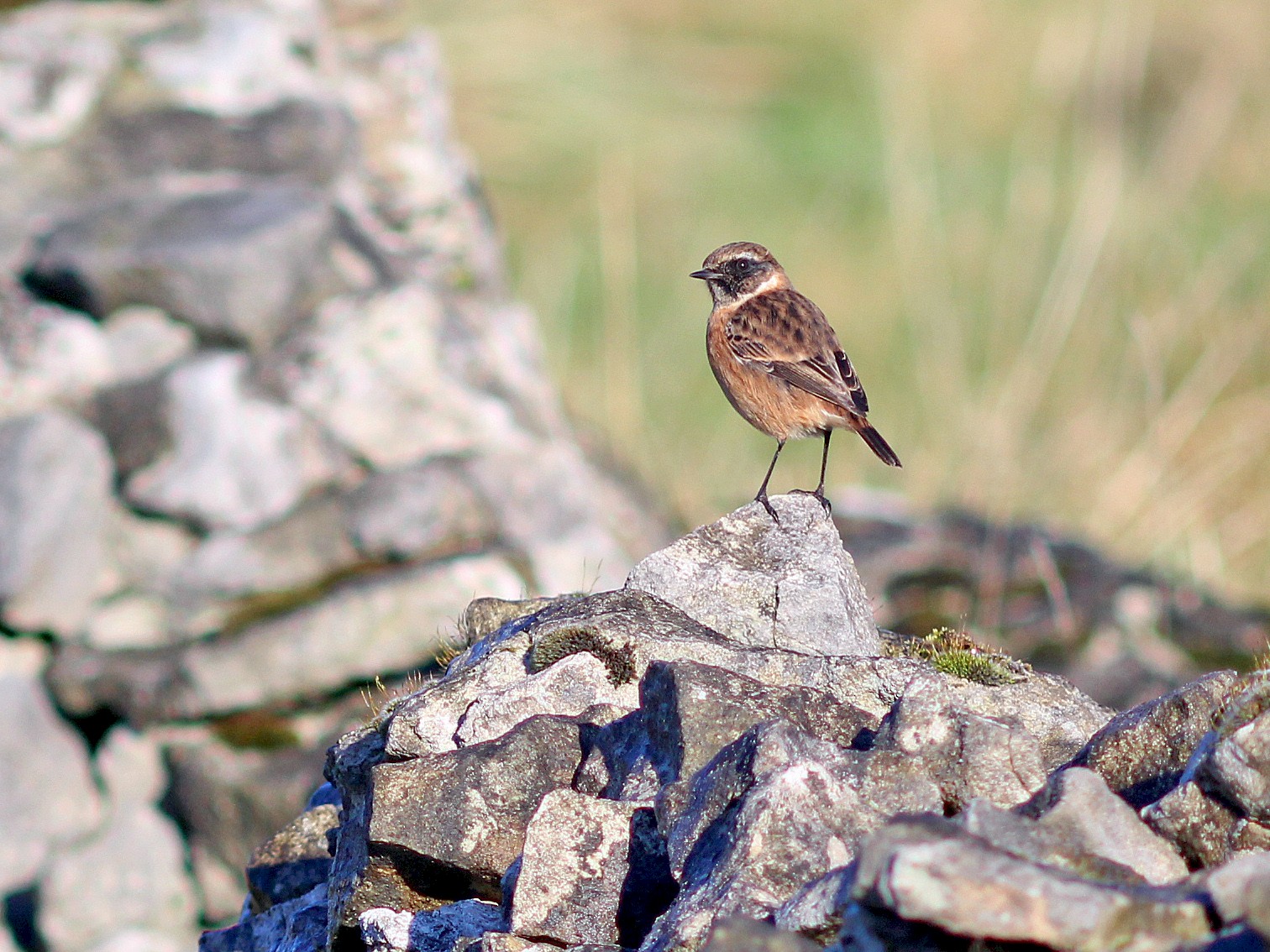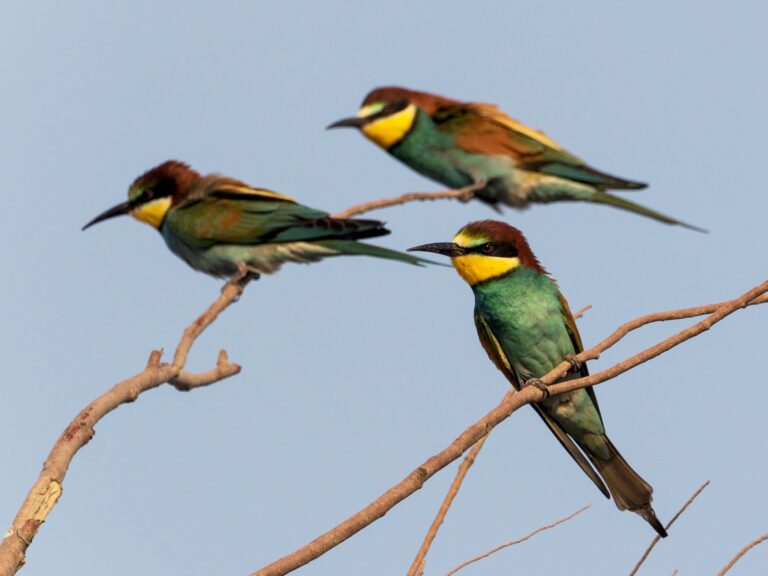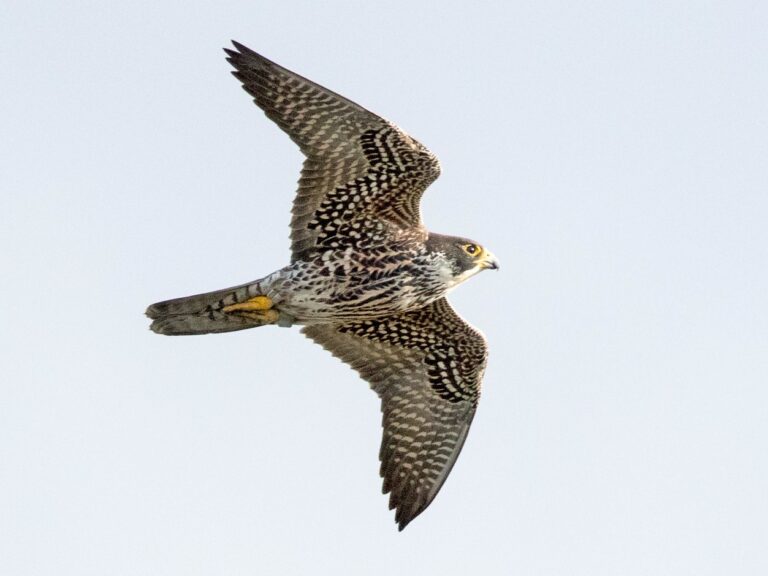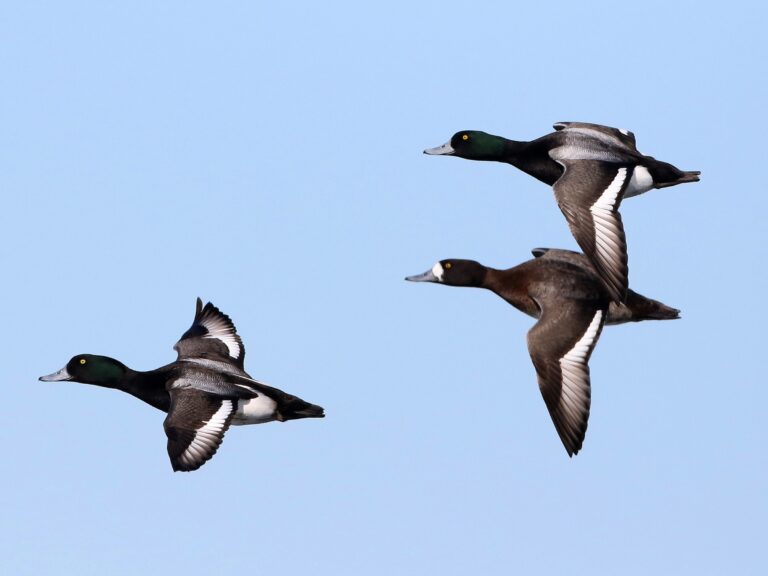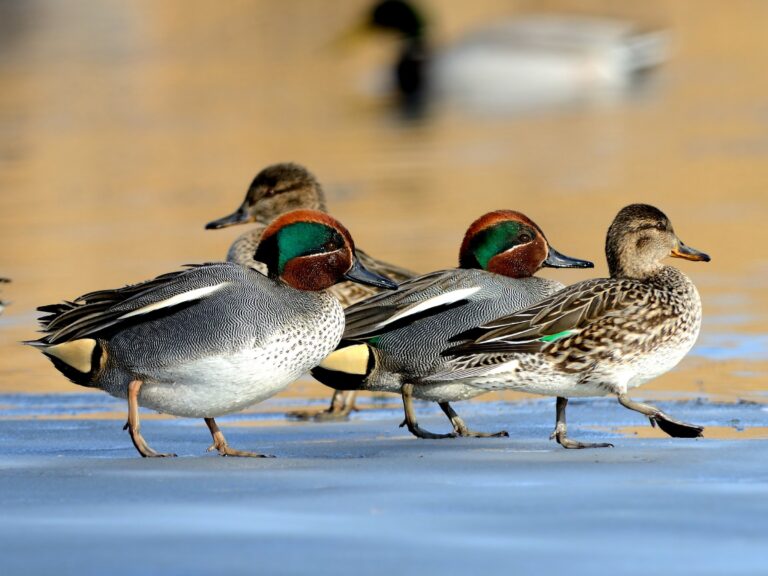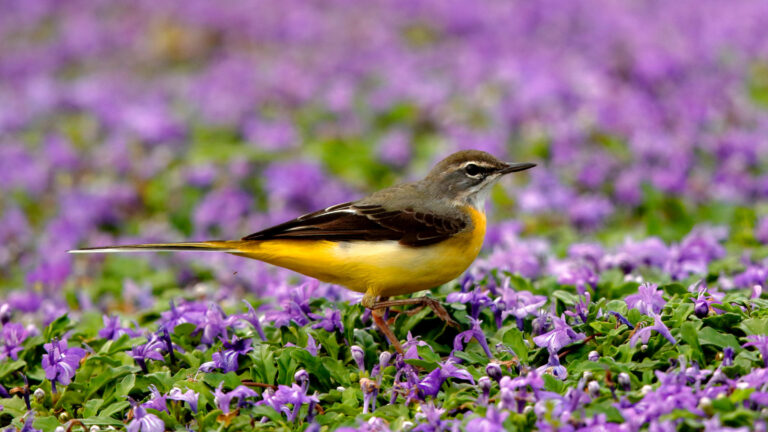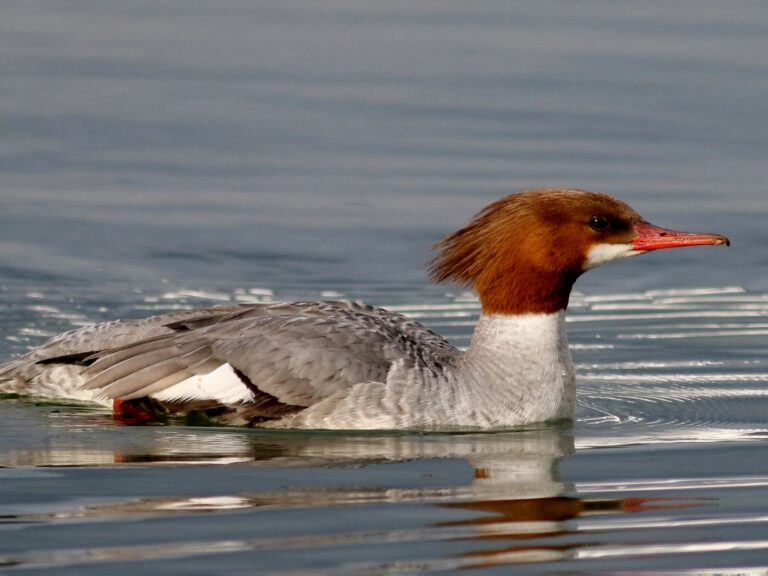European stonechat – Fascinating Behaviors and Stunning Plumage Revealed
Overview of the European Stonechat
Taxonomy and Classification
The European Stonechat, scientifically named Saxicola rubicola, is a member of the family Muscicapidae within the order Passeriformes. This bird species was once grouped with its relatives under Saxicola torquata, but genetic and behavioral studies have led to its current status as a distinct species.
There is ongoing research regarding its subspecies and relationships with the African and Siberian stonechats. The European Stonechat is often featured on bird lists under its Latin name and is commonly recorded using the alpha code “ESTO”.
Researchers review populations across regions, with particular focus on birds from Hungary, Britain, and Central Europe, which helps clarify evolutionary links and distribution patterns (more information). The species’ position within Muscicapidae associates it with Old World flycatchers.
Common and Latin Names
The English name is “European Stonechat,” a direct reference to its habitat preferences and characteristic call, which resembles two stones being tapped together. In scientific contexts, it is identified as Saxicola rubicola.
Some older literature may refer to it by the historical name Saxicola torquata, but this now describes a more widespread complex of related forms. Birders use the four-letter alpha code “ESTO” when recording data, particularly in ornithological surveys.
The term “stonechat” is also applied to similar birds, but to avoid confusion, specifying “European Stonechat” is preferred, especially when discussing differences from the Whinchat or Siberian Stonechat (Stonechats identification guide).
Physical Characteristics
The European Stonechat is a compact bird, measuring 12–13 cm in length and weighing around 13–17 grams. Males are notable for their black head or “black hood,” white collar, and deep orange breast, making them easy to spot in open scrub and grasslands.
Females and juveniles are paler, lacking the striking black head but showing mottled brown upperparts and a warm buff underside, with hints of the male’s coloration. Both sexes have white patches on the sides of the neck and base of the tail, visible in flight.
Images often highlight the pronounced contrast between the dark head and colorful underparts in males. These features, along with their upright posture and habit of perching on exposed stems, distinguish the European Stonechat from similar passerine birds (detailed study of physical and genetic diversity).
Distribution and Habitat
The European stonechat occupies a wide and varied range across Europe, North Africa, and parts of western Asia. It thrives in open landscapes, favoring certain types of vegetation and geography depending on the region.
The European Stonechat is a small passerine bird widespread across Europe, recognized by its striking appearance and lively behavior. It belongs to a group with some taxonomic complexity and displays distinctive field marks that help in its identification.
Global Range
The European stonechat (Saxicola rubicola) is native to Europe, extending from the Atlantic coast across central and eastern Europe to western Asia. Its distribution also includes northern Africa, particularly Morocco and Algeria, where suitable habitats exist.
Populations in the British Isles and western continental Europe tend to be largely resident, while those in eastern parts of its range migrate to southern Europe and North Africa during winter.
Range maps highlight its broad spread, showing concentrations in countries such as the UK, France, Spain, Germany, and Italy. In mountainous regions such as the central Apennines, Italy, the species persists at elevations above 1500 meters where it is closely linked to the presence of alpine juniper and similar vegetation types. For more details on its mountain presence, see this study on stonechats in the Apennines.
Preferred Habitats
European stonechats select open habitats, especially fields, heathlands, and areas dominated by low shrubs and grasses. They favor environments with scattered bushes, gorse, or bramble patches that provide both perching sites and cover for nesting.
This bird often occurs in old pastures, rough grassland, roadside verges, and coastal dunes. It avoids densely wooded areas and urban centers, preferring mosaic landscapes composed of both open ground and shrubby cover.
During breeding, the availability of structurally diverse vegetation is critical, supporting their insect foraging needs and nest concealment. Studies indicate that features like patch size and vegetation height influence their territory choice and breeding success.
Vagrancy and Introduced Populations
Though the European stonechat is primarily a resident or short-distance migrant, vagrants occasionally reach areas outside their normal range. Sightings of individuals, especially during migration periods, are reported in northern Scandinavia and as far as Iceland.
There are no known large introduced populations of European stonechat outside its native range. Unlike some related species, it has not established stable feral populations elsewhere.
However, records of accidental vagrancy occasionally fuel discussions about potential colonization, though these remain isolated events noted mostly by birdwatchers. Observers monitor range shifts as possible indicators of changing habitats or climate, but these movements have not led to sustained populations in new regions.
Behavior and Ecology
The European stonechat displays distinctive habits in its daily life, from its feeding strategies to its reproductive behaviors. This small passerine is well-adapted to a range of habitats, with notable patterns related to territory, mating, and seasonal changes in appearance.
Feeding Habits
European stonechats primarily feed on invertebrates, especially insects such as beetles, flies, and caterpillars. They typically forage by perching on low shrubs or fence posts, scanning the ground for movement. When prey is spotted, they dive down swiftly to capture it, then return to their perch.
Their foraging often involves repeated short flights from their perch to the ground and back. During autumn and winter, their diet broadens to include seeds and small berries when invertebrates are less abundant. Stonechats’ feeding habits make them important for local insect population control. For more on their ecological roles and diet, see the population density of the European Stonechat.
Mating and Monogamy
The species is primarily monogamous, with pairs forming territories that they defend together. During the breeding season, both males and females display territorial behavior, often engaging in vocalizations and visual displays to ward off rivals.
Stonechats value territory quality, which strongly influences pair formation and breeding success. Males are especially active in defense and often confront other males that enter their space, as confirmed in studies observing pair territoriality of wintering stonechats. Pair bonds can last for multiple seasons, although extra-pair copulations sometimes occur.
Breeding Season and Plumage
Breeding season varies with location but often begins in early spring and may last through midsummer. Males develop distinctive breeding plumage, featuring bold black heads, orange breasts, and white neck patches. This striking appearance is used to attract females and assert dominance over rivals.
Females and juveniles are generally duller in color, which provides camouflage around the nest. Both sexes take part in raising the young, with males sometimes seen feeding chicks after fledging. The seasonal timing and plumage changes have been explored in research on European stonechat reproductive behavior.
Subspecies and Related Stonechat Species
The European Stonechat is not a single, uniform species but is divided into several subspecies. It also belongs to a group of closely related stonechat species found across Europe, Africa, and Asia.
Recognized Subspecies
The primary subspecies of the European Stonechat are Saxicola rubicola rubicola and Saxicola rubicola hibernans. Saxicola rubicola rubicola is commonly found across mainland Europe, while Saxicola rubicola hibernans primarily inhabits the British Isles.
European Stonechat subspecies may show slight differences in plumage and migratory behavior. For example, S. r. hibernans tends to be darker and more resident compared to continental forms.
Other stonechat variants were previously grouped as Saxicola torquatus, but current research recognizes Saxicola rubicola as a distinct species for European forms. You can read more about the analysis of genetic and environmental differences across these subspecies in this scientific study.
Comparison with Similar Species
The European Stonechat can be confused with several closely related species. Notably, the Siberian Stonechat (Saxicola maurus) and Stejneger’s Stonechat (Saxicola stejnegeri) are found farther east and exhibit paler underparts and different migration patterns.
In addition, the African Stonechat (Saxicola torquatus) displays distinct genetic adaptations, such as a lower basal metabolic rate compared to its European relatives, a difference highlighted in comparative studies of European and African stonechats.
Other related species include the Ethiopian Stonechat (Saxicola (torquatus) albofasciatus), Reunion Stonechat (Saxicola tectes), and Whinchat (Saxicola rubetra), the latter of which is usually more migratory and has a prominent white supercilium.
Here are some common distinguishing features:
| Species/Subspecies | Range | Key Features |
|---|---|---|
| Saxicola rubicola rubicola | Mainland Europe | Rich chestnut breast, small white neck patch |
| Saxicola rubicola hibernans | British Isles | Darker plumage, more resident |
| Saxicola maurus (Siberian) | Eastern Europe/Asia | Paler, longer migration |
| Saxicola torquatus (African) | Sub-Saharan Africa | Lower BMR, genetic differences |
French speakers may know the European Stonechat as the Tarier Pâtre. Understanding these distinctions helps in accurate identification and awareness of the species’ wide ecological variation.
Conservation and Threats
The European Stonechat is a widespread songbird, but local populations can be sensitive to changes in land use and habitat quality. Effective conservation relies on understanding its status, recognizing key threats, and using active management.
Conservation Status
The European Stonechat (Saxicola rubicola) is not currently listed as globally threatened and is considered of Least Concern by many international assessments. Its range covers much of Europe, with populations in varied habitats such as open grasslands, heathlands, and low shrub areas.
Recent reviews confirm that the species remains common in some regions but shows local declines, especially in parts of Central and Eastern Europe. In places like Hungary, its overall presence is still strong, but numbers have fluctuated due to regional factors over the last decades. For more detailed assessments on its national status, see this recent review of the European Stonechat in Hungary.
Threats to Survival
Major threats include habitat loss, land abandonment, and intensive agricultural practices. Transformation of traditional grasslands into arable land and the reduction of hedges and fallow fields negatively affect nesting and foraging opportunities.
Pesticide use can lower food availability by reducing insect populations. Breeding success is also impacted by changing grassland management, such as frequent mowing and the removal of marginal habitats. In lowland areas, urban development and drainage of wetlands are further concerns.
Increased frequency of droughts and extreme weather events linked to climate change compound these problems by impacting their food supply and suitable breeding habitat. These factors have been identified in studies focused on habitat selection and conservation management for stonechats and related grassland species.
Current Conservation Efforts
Efforts focus on maintaining and restoring suitable habitat, including preserving extensive grasslands with shrubs, promoting low-intensity farming, and preventing overgrazing. Agri-environment schemes that support late mowing and maintain field margins benefit breeding stonechats.
Local monitoring programs track population trends and evaluate the efficiency of different management actions. Educational outreach promotes awareness among land managers and stakeholders about the importance of habitat complexity. Researchers also recommend in-depth studies on habitat use and threats to better target conservation measures. International cooperation is vital, as many populations are migratory and cross national borders.
Field Identification and Observation
Recognizing the European stonechat in the field requires attention to its distinctive features, strategies for effective observation, and an ability to separate it from similar British birds. Good field identification skills are essential for serious birders, especially during events like a big year or when that extra observation counts toward a local listing challenge.
Identifying Features
The European stonechat is a small, upright perching bird, often seen on exposed shrubs or fence posts. Key identification features include a dark head, bold white collar, orange-red breast, and mottled brown upperparts. Males tend to be brighter, especially during the breeding season, while females are duller with a paler throat and less distinct white markings.
Notable field marks also include a short, thin bill and dark legs. In flight, stonechats display a white patch on the side of the neck and small white wing patches. During the non-breeding season, plumage can be less vibrant, so focus on posture and habit. These birds frequently flick their tails and drop from perches to feed, a behavior that can help observers differentiate them from other species (more on identification).
Tips for Birdwatchers
To observe stonechats effectively, scan open countryside, heathland, coastal grasslands, and fallow fields. Look for them perched conspicuously atop gorse, bramble, or low branches. Early morning and late afternoon provide the best light and the most active birds.
Use a quality field guide to aid identification and consider a spotting scope for distant birds. Recording exact observation locations and behaviors supports records for local bird atlases and national surveys. Patience is key, as stonechats often return to the same favored perches. For those involved in competitions like a big year, accurate logging of sex and plumage detail can help avoid confusion with similar species (see habitat and behavior data).
Similar British Birds
Stonechats are sometimes confused with whinchats and Siberian stonechats. Whinchats have a strong white eyebrow (supercilium), paler breast, and more streaked upperparts; they also often flick their wings after landing. Siberian stonechats generally show colder tones, weaker breast coloration, and subtle differences in wing and tail patterns.
A simple table can help differentiate common confusion species:
| Feature | Stonechat | Whinchat | Siberian Stonechat |
|---|---|---|---|
| Head color | Dark/black | Brown | Dark, often less black |
| Breast color | Bright orange | Pale peach | Buff to pale orange |
| Supercilium | Absent | Bold white | None or faint |
For more information on distinguishing these birds, consult specialized literature such as “Stonechats” by Urquhart & Bowley (book resource). This is valuable for competing birders and anyone tracking British birds throughout the seasons.
Media and Resources
A wide range of media—including photographs, videos, and reference lists—support research and appreciation of the European stonechat. High-quality visual materials and organized records are essential for accurate identification and deeper study.
Photographs and Videos
Numerous online galleries and birding platforms feature extensive collections of European stonechat photographs and videos showing differences between male, female, and juvenile plumage. Specialized websites such as the Rivista Italiana di Ornitologia and ornithological forums showcase detailed images of behavior, nesting, and habitat.
Birdwatchers can find short video clips documenting calls, perching styles, and seasonal changes across Europe. While the European stonechat is not native to North America, it occasionally appears in vagrant reports, sometimes documented by the American Birding Association. For comparison, the ABA and the Classic Collection of North American Birds provide high-definition video resources for stonechat relatives, useful for understanding field marks and call differences.
Important Reference Lists
Comprehensive literature lists help enthusiasts and researchers trace scientific and popular references related to the European stonechat. Key ornithological journals, such as Avocetta, regularly update species accounts and habitat studies.
Bird information sites and projects like the Wiley journal on habitat selection summarize important findings, offering checklists, distribution data, and nesting records. Inspired by broader collections such as Birds of North America, these reference lists enable comparison and help integrate stonechat data into global bird search databases. Lists may include links to digital field guides, recordings of calls, and recommended literature for both academic and casual birders.
